Amidst the rugged peaks of Alberta’s Rocky Mountains, a mesmerizing natural spectacle unfolds each winter at Abraham Lake, transforming its frozen expanse into a mesmerizing canvas adorned with thousands of delicate ice bubbles.
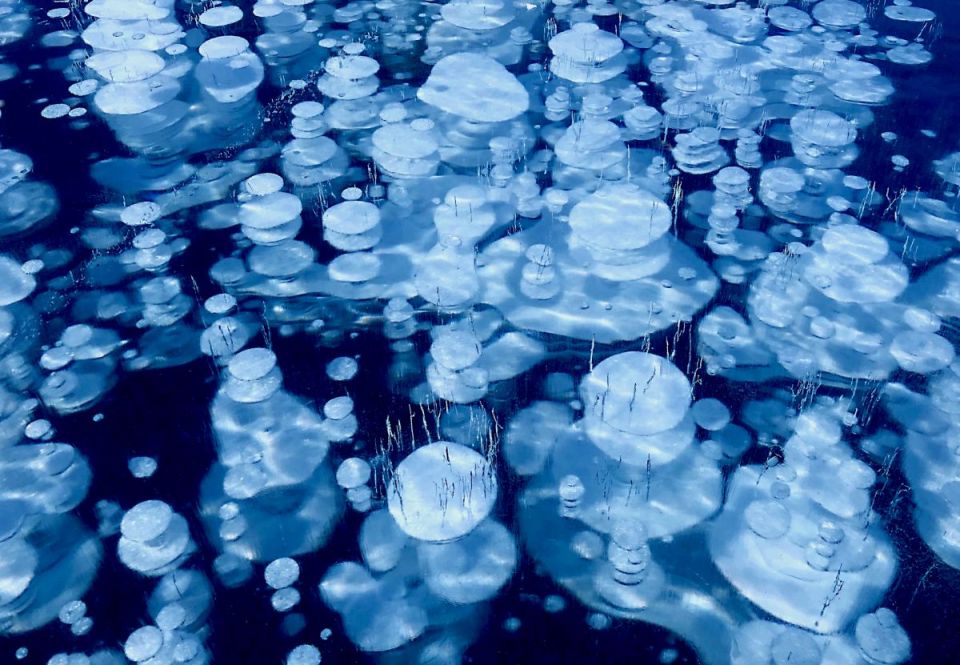
Frozen methane bubbles in Abraham Lake, Alberta, Canada. Photo: Terry Lawson
Nestled amidst the snow-kissed landscapes of Alberta’s Rocky Mountains lies Abraham Lake, a reservoir known for its unique and mesmerizing phenomenon – frozen bubbles. As winter descends, the lake transforms into a captivating canvas, adorned with thousands of tiny white bubbles trapped within its crystalline ice.
The origins of these ice bubbles can be traced to the lake’s bottom, where decaying organic matter, primarily plant matter and tree limbs, but also animal remains, release methane gas. As the water temperature drops, the methane, lighter than water, rises to the surface, forming a network of bubbles that become encased in the solidifying ice and create a surreal spectacle of white orbs and patterns.
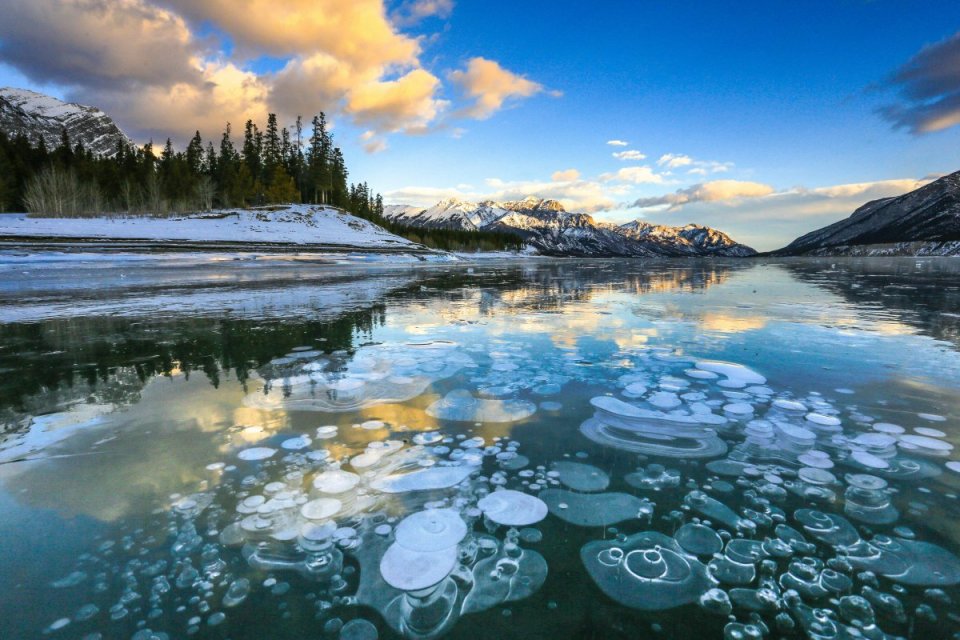
Abraham Lake was created in 1972 by the construction of the Bighorn Dam. Photo: David Wirzba
The best time to witness this natural spectacle is from mid-January to early February, when the bubbles are at their fullest. The thickness of the ice at this time allows visitors to safely walk on the lake, offering a close-up view of the bubbles shimmering beneath their feet.
The wind also helps to keep the snow off the ice, making the bubbles more visible. However, you should always exercise caution when venturing onto the ice, as it can vary in thickness and stability depending on the location and weather conditions.
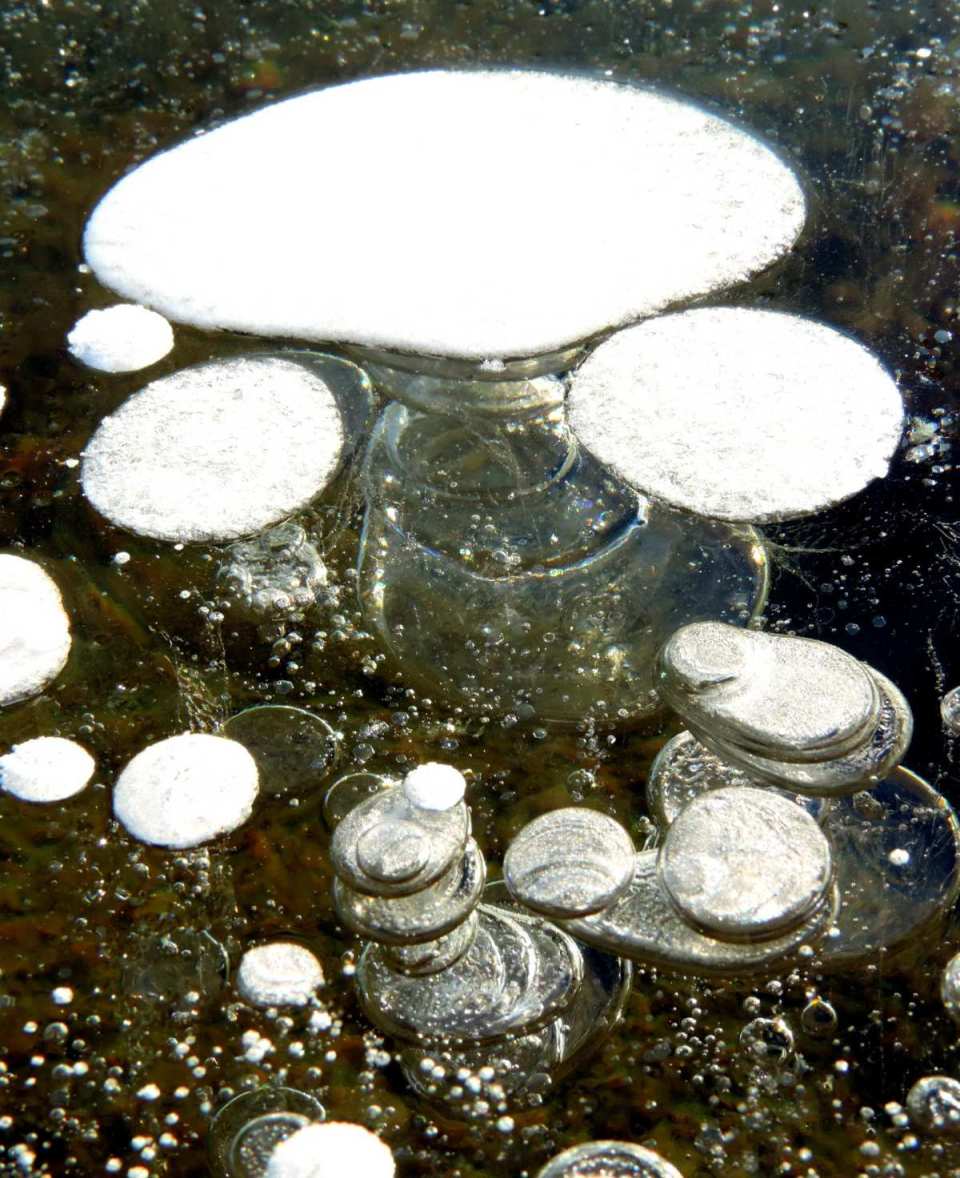
The methane bubbles are created by decaying organic matter at the lake’s bottom. Photo: Danilo Gallotti
The frozen bubbles at Abraham Lake are not just a visual treat; they also play an important role in the lake’s ecosystem. The methane gas trapped within the bubbles serves as a food source for bacteria and other microorganisms, contributing to the lake’s biodiversity.
To experience the frozen bubbles of Abraham Lake, you first need to follow the only road into Abraham Lake, the David Thompson Highway (H11), and then drive to the Preacher’s Point Viewing Platform, located on the south end of the lake. From there, you can venture onto the ice, carefully following the designated pathways and avoiding areas with cracks or thin ice.
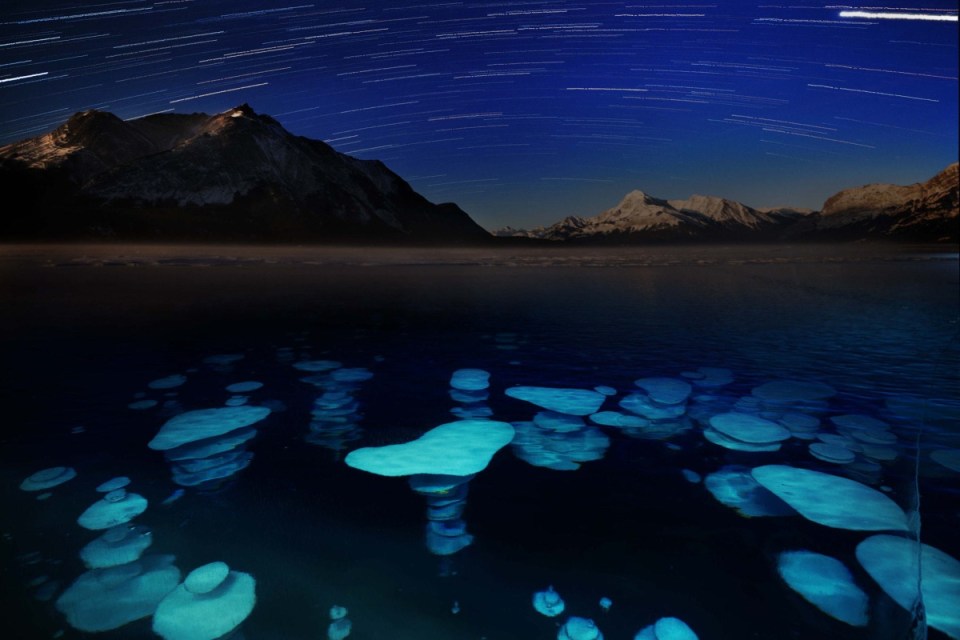
The bubbles look even more intriguing at night. Photo: Emma Liang
Other places to see the frozen bubbles include Windy Point and Hoodoo Creek. These spots offer scenic views of the lake and the surrounding Rocky Mountains, as well as access to the ice. You can also join a guided tour or rent ice cleats and other equipment from local outfitters. But be careful not to pop or ignite the bubbles, as they contain flammable gas that can be harmful if inhaled or exposed to fire.
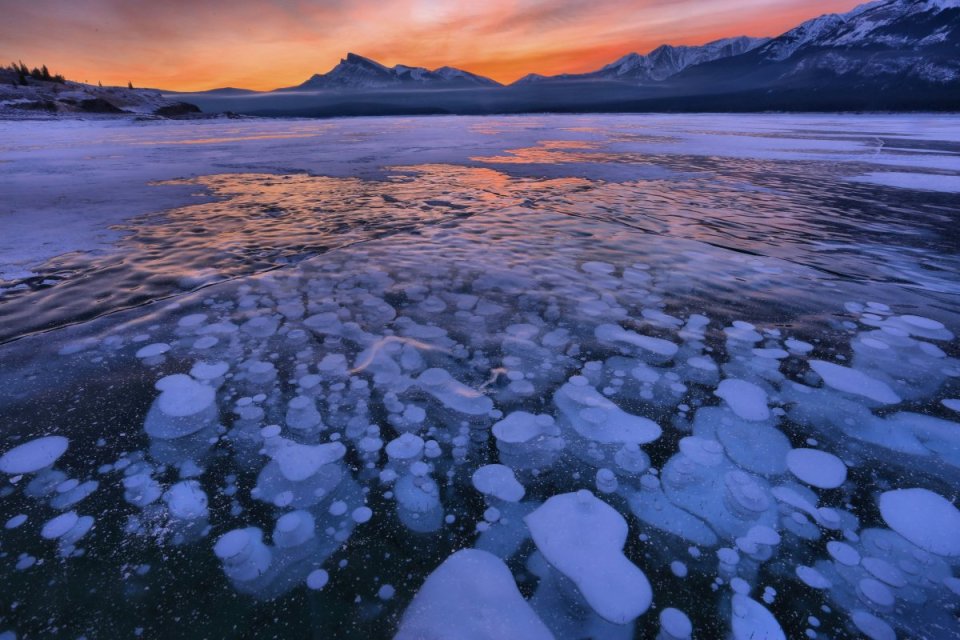
Methane gas and crystalline ice create winter at Abraham Lake. Photo: David Wirzba
A visit to Abraham Lake during winter is an unforgettable experience, offering a glimpse into the wonders of nature and the delicate balance of the environment. The frozen bubbles, like tiny sentinels of the lake’s ecosystem, remind us of the interconnectedness of life and the beauty that emerges even in the harshest of conditions.

